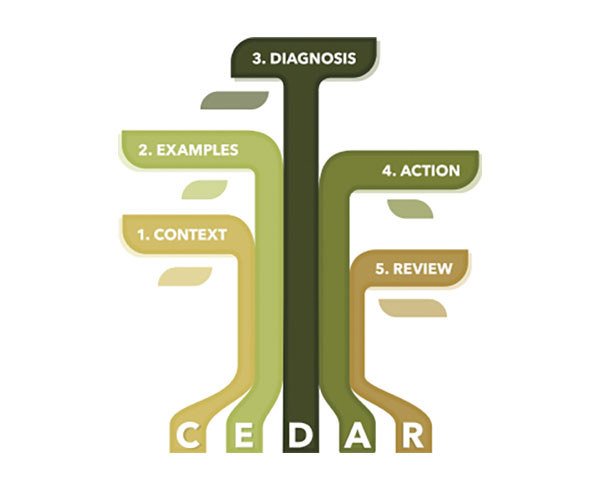
How CEDAR started
In a workshop for a Hong Kong government department a few years ago, I was asked to demonstrate how to handle a particularly difficult feedback conversation.
Sitting in the hot seat, I realised that not having a framework for the discussion is like being without a map: you may be moving, but you’re not entirely sure it’s in the right direction. Over the next few years I observed as closely as possible what worked and what didn’t in every conversation, particularly from the viewpoint of the feedback receiver, and in 2003 developed the CEDAR feedback steps.
These five steps will help you to guide each feedback discussion confidently and constructively, even when it’s about a tough situation.
